By Raphael Rosen, Princeton Plasma Physics Laboratory
The gold standard for analyzing the behavior of fusion plasmas may have just gotten better. Mario Podestà, a staff physicist at the U.S. Department of Energy’s Princeton Plasma Physics Laboratory (PPPL), has updated the worldwide computer program known as TRANSP to better simulate the interaction between energetic particles and instabilities – disturbances in plasma that can halt fusion reactions. The program’s updates, reported in the journal Nuclear Fusion, could lead to improved capability for predicting the effects of some types of instabilities in future facilities such as ITER, the international experiment under construction in France to demonstrate the feasibility of fusion power.
Podestà and co-authors saw a need for better modeling techniques when they noticed that while TRANSP could accurately simulate an entire plasma discharge, the code wasn’t able to represent properly the interaction between energetic particles and instabilities. The reason was that TRANSP, which PPPL developed and has regularly updated, treated all fast-moving particles within the plasma the same way. Those instabilities, however, can affect different parts of the plasma in different ways through so-called “resonant processes.”
The authors first figured out how to condense information from other codes that do model the interaction accurately – albeit over short time periods – so that TRANSP could incorporate that information into its simulations. Podestà then teamed up with TRANSP developer Marina Gorelenkova at PPPL to update a TRANSP module called NUBEAM to enable it to make sense of this condensed data. “Once validated, the updated module will provide a better and more accurate way to compute the transport of energetic particles,” said Podestà. “Having a more accurate description of the particle interactions with instabilities can improve the fidelity of the program’s simulations.”
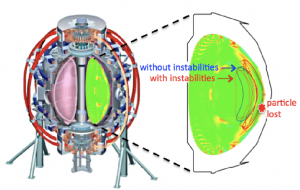
Fast-moving particles, which result from neutral beam injection into tokamak plasmas, cause the instabilities that the updated code models. These particles begin their lives with a neutral charge but turn into negatively charged electrons and positively charged ions – or atomic nuclei – inside the plasma. This scheme is used to heat the plasma and to drive part of the electric current that completes the magnetic field confining the plasma.
The improved simulation tool may have applications for ITER, which will use fusion end-products called alpha particles to sustain high plasma temperatures. But just like the neutral beam particles in current-day-tokamaks, alpha particles could cause instabilities that degrade the yield of fusion reactions. “In present research devices, only very few, if any, alpha particles are generated,” said Podestà. “So we have to study and understand the effects of energetic ions from neutral beam injectors as a proxy for what will happen in future fusion reactors.”
PPPL, on Princeton University’s Forrestal Campus in Plainsboro, N.J., is devoted to creating new knowledge about the physics of plasmas — ultra-hot, charged gases — and to developing practical solutions for the creation of fusion energy. Results of PPPL research have ranged from a portable nuclear materials detector for anti-terrorist use to universally employed computer codes for analyzing and predicting the outcome of fusion experiments. The Laboratory is managed by the University for the U.S. Department of Energy’s Office of Science, which is the largest single supporter of basic research in the physical sciences in the United States, and is working to address some of the most pressing challenges of our time. For more information, visit science.energy.gov.
Podestà, M. Gorelenkova, D.S. Darrow, E.D. Fredrickson, S.P. Gerhardt and R.B. White. Nucl. Fusion 55 053018
doi:10.1088/0029-5515/55/5/053018

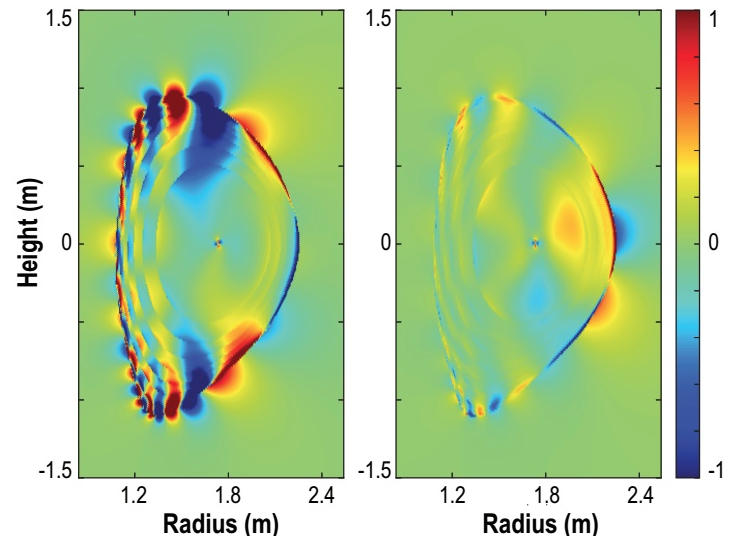
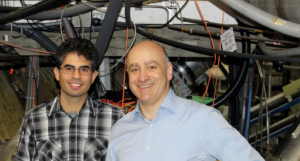
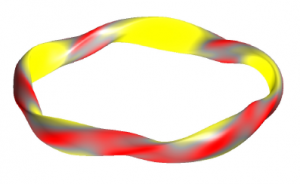
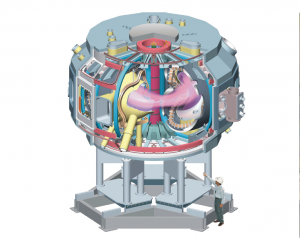
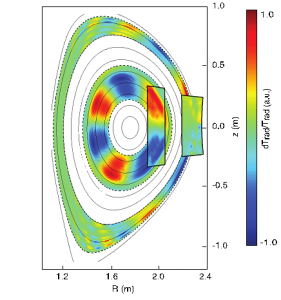
You must be logged in to post a comment.